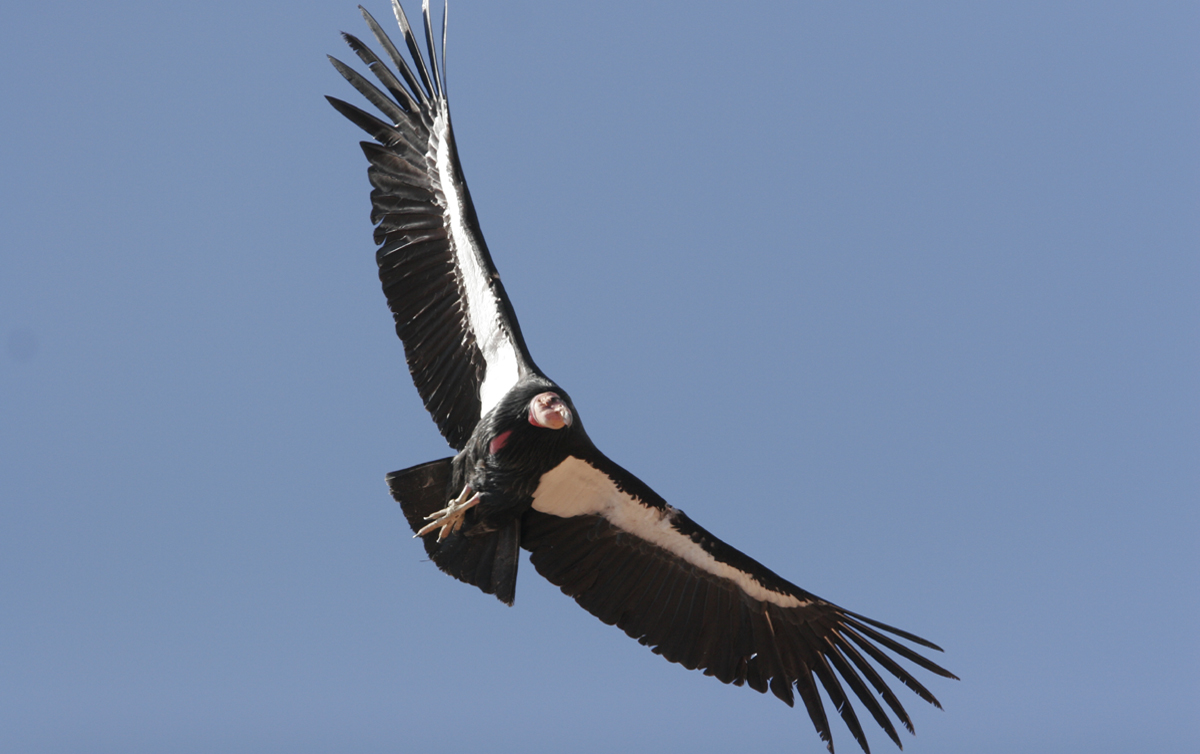
Endangered California Condors released at Vermilion Cliffs National Monument
By Rachel Carnahan
There is nothing quite as iconic in the western United States as a California Condor soaring over the red-rock-canyon landscapes of northern Arizona and southern Utah. Thanks to people working together to recover this species, condors have become a fixture in southwestern skies. On National Public Lands Day Sept. 22 at 11 a.m., the public is invited to join the recovery effort by witnessing firsthand a spectacular release into the wild of several young, captive-bred young California Condors. They will be released by The Peregrine Fund atop the spectacular cliffs in Vermilion Cliffs National Monument in northern Arizona.
The public is welcome to observe the release from a viewing area, where spotting scopes provided by partners and Swarovski Optik will be set up and project personnel will be available to answer questions. Attendees should bring spotting scopes or binoculars, sunscreen, water, snacks, chairs, and layered clothing. An informational kiosk, a shade structure, and a restroom will be available at the site.
National Public Lands Day is the nation’s largest hands-on volunteer effort to improve and enhance America’s public lands. National Public Lands Day involves the U.S. Bureau of Land Management and other federal agencies along with state and local governments and private groups.
This will be the 23rd annual public release of condors in Arizona since the southwest condor recovery program began in 1996. Condors are produced at The Peregrine Fund’s World Center for Birds of Prey in Boise, the Oregon Zoo, the Los Angeles Zoo, and the San Diego Zoo Safari Park and then transported to release sites annually for release into the wild.
The California Condor population declined to just 22 birds in the 1980s when the greater California Condor Recovery Program was initiated to save the species from extinction. As of July 25, there were 85 condors in the wild in the rugged canyon country of northern Arizona and southern Utah, and the total world population of endangered California Condors now numbers nearly 500 individuals with more than half flying in the wilds of Arizona, Utah, California, and Mexico.
The Arizona-Utah recovery effort is a cooperative program by federal, state, and private partners, including The Peregrine Fund, the Arizona Game and Fish Department, the U.S. Fish and Wildlife Service, the Bureau of Land Management’s Vermilion Cliffs National Monument, Grand Canyon and Zion National Parks, the Utah Division of Wildlife Resources, and Kaibab and Dixie National Forests, among many other supporting groups and individuals.
To reach Vermilion Cliffs National Monument, take Highway 89A from Kanab or Page to the Vermilion Cliffs (from Flagstaff take Highway 89 to Highway 89A). Turn north onto BLM Road 1065 (a dirt road next to the small house just east of the Kaibab Plateau) and continue almost 3 miles. Click here for a map.
For more information about California Condors in Arizona, visit peregrinefund.org/condor.
Articles related to “Endangered California Condors released at Vermilion Cliffs National Monument”
Oversexed endangered condor pair in Zion National Park making tourists uncomfortable
Zion National Park climbing routes re-open after successful peregrine falcon nesting season
A condor dies in Zion National Park and we’re supposed to stop using lead ammunition?



